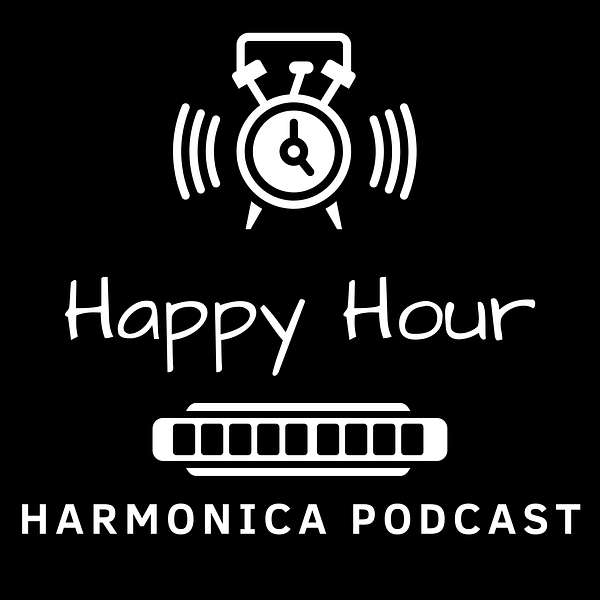Now living in Boston, originally from New York
Mike got involved in the great music scene in Boston, playing with many of the great players there, including Bonnie Raitt and Hound Dog Taylor
Was working as a janitor at a Cambridge, Massachusetts blues music club called Joe’s Place (which had a lot of brawls) and he sat in with a lot of bands
Sat in a lot with Hound Dog Taylor and thought he would get hired to play with them but there was a big fight so Hound Dog Taylor never went back
Mike’s father was a professional jazz vocalist and bass player, although Mike wasn’t that aware of this until later
Lost half his little finger at age four, limiting his ability to play some instruments, and hence he choose the harmonica later
Learnt saxophone when younger, but missing part of finger inhibited his playing, so he picked up the harmonica
Discovered Paul Butterfield in the late 1960s
Father had a music store, where Mike was able to obtain free harmonica
Left New York and started playing in the coffee houses of Cambridge and Boston
Met John Kolstadt and that’s when Mike started concentrating on the harmonica
Was given a Paul Butterfield album at a dance, which is where he first discovered harmonica
Started learning the harmonica by playing along with records
When Mike started to play chromatic and how he made sense of it initially
The moment of revelation for understanding the chromatic was listening to James Cotton play I’m Ready
Then heard Little Walter playing a C chromatic in the key of G, opening up the idea that you can play different keys beyond D minor on the chromatic
Playing blues on chromatic is a good entry point for diatonic players
The influence of Toots on Mike after his father insisted he listen to one of his recordings
First recording on a non-blues harmonica, using a Koch, was with Richard Johnson, Old Man Adams, which Richard Hunter included in his Jazz Harp book
Released an album with John Kolstadt in 1975, Beans Taste Fine
Joined a Country and Western band who had a violinist who was into jazz, and encouraged Mike in that direction
Attended the Berklee School of Music from 1978-1980, where he had to play saxophone as they wouldn’t allow chromatic harmonica
Had to transpose the Alto saxophone parts to the chromatic, which wasn’t easy
Would join in music activities at Berklee playing the chromatic
Anthology of recordings through the 1970s and early 1980s: The Mouth That Roared, when was doing sessions in New York
Had to sight reading in the New York scene, with some intense competition, such as Robert Bonfiglio
Donny Brooks was the really successful studio harmonica player in New York
Donny Brooks was instrumental in creating the score for the musical Big River, which Mike later played in a Boston production
Mike improved his sight reading abilities by studying with a saxophone educator
Harmonica Salad, released in 1991, is the first collection of Mike’s solo work, including tracks with Ronnie Earl
Turk’s Works was released in 1996, with a letter from Toots Thielemans as part of the album liner notes, who Mike got to know and hung out with him
Toots gave Mike some general tips on playing the chromatic, but no actual lessons
Recorded some albums in Europe after the success of the Harmonica Salad album over there and Mike toured with the band in Italy and Germany
Reached a high-level in his jazz chromatic playing
Very satisfied with The Italian Job album, which Mike produced himself
Includes some diatonic on the later jazz albums, and how his jazz playing has influenced his approach to the diatonic
Tin Sandwich Swing song (from Harmonica Salad album) sees Mike playing in the key of each chord, including use of overblows
Mike started using overblows in the 1970s, having originally learnt about them from Richard Hunter, although Mike wouldn’t describe himself as an accomplished overblow player
Use of overblows brings the diatonic closer to how the chromatic functions
Charlie Musselwhite book which described how all the chromatic notes can be achieved on the diatonic
Played a classical piece with the Boston Symphony Orchestra, although doesn’t consider himself a classical musician
Mike used a Polyphonia to play the glissando part for the orchestra
Has recorded two movie soundtracks
Pandemic has limited playing abilities somewhat, although still has a monthly residency in Cambridge, which is broadcast on Facebook
Joe Filisko used to maintain Mike’s chromatics
Played the Hohner Toots model chromatics, and two of Joe Filisko’s custom Marine Bands
Recently been playing the Hohner Crossover, which he likes
How Mike started playing the Renaissance chromatic, created by Douglas Tate and his partner Bobby Giordano
Douglas lent Mike a Renaissance to try at a SPH convention
Can use any chromatic reed plate on the Renaissance, with Mike using Toots Hard Bopper or Mellow Tone plates on his
Seydel manufactured the Renaissance for a few years, but this ended after their craftsman stopped making them by hand
Fifty Renaissance chromatics were made by Douglas Tate
Contact the podcast if own a Renaissance, or know someone who does
Mike lost one of his Renaissance chromatics, which turned up on eBay, and he managed to retrieve it
Amp of choice is a Gallien-Krueger studio monitor amplifier with an analogue Nanoverb pedal
Uses a Peavey PVM45 microphone
Experimented with the DM48 MIDI chromatic for a while
Uses the Nanoverb for effects
Likes to use his own equipment, as he knows how that sounds, and works
Embouchre is mostly pucker, but uses some tongue blocking
